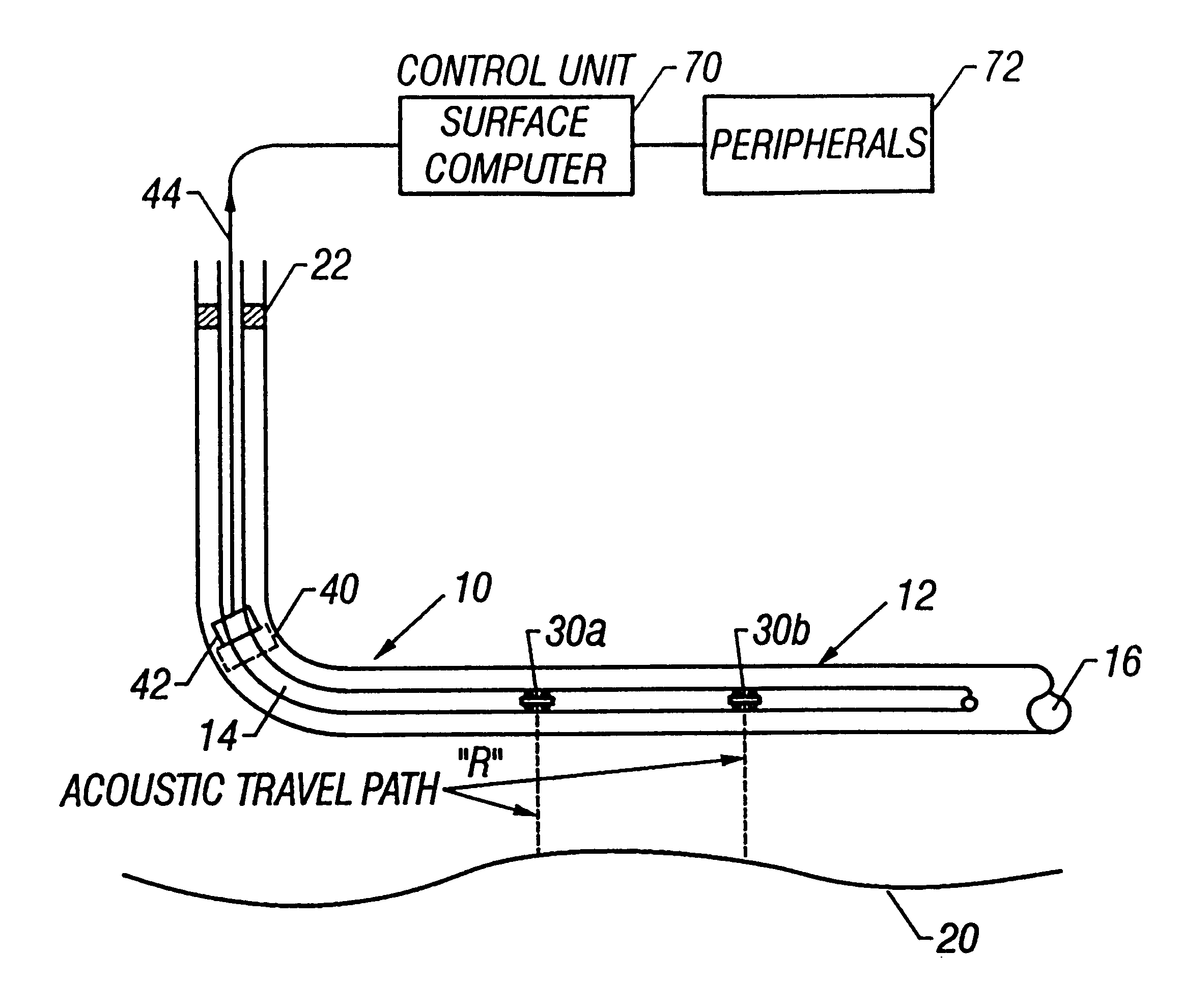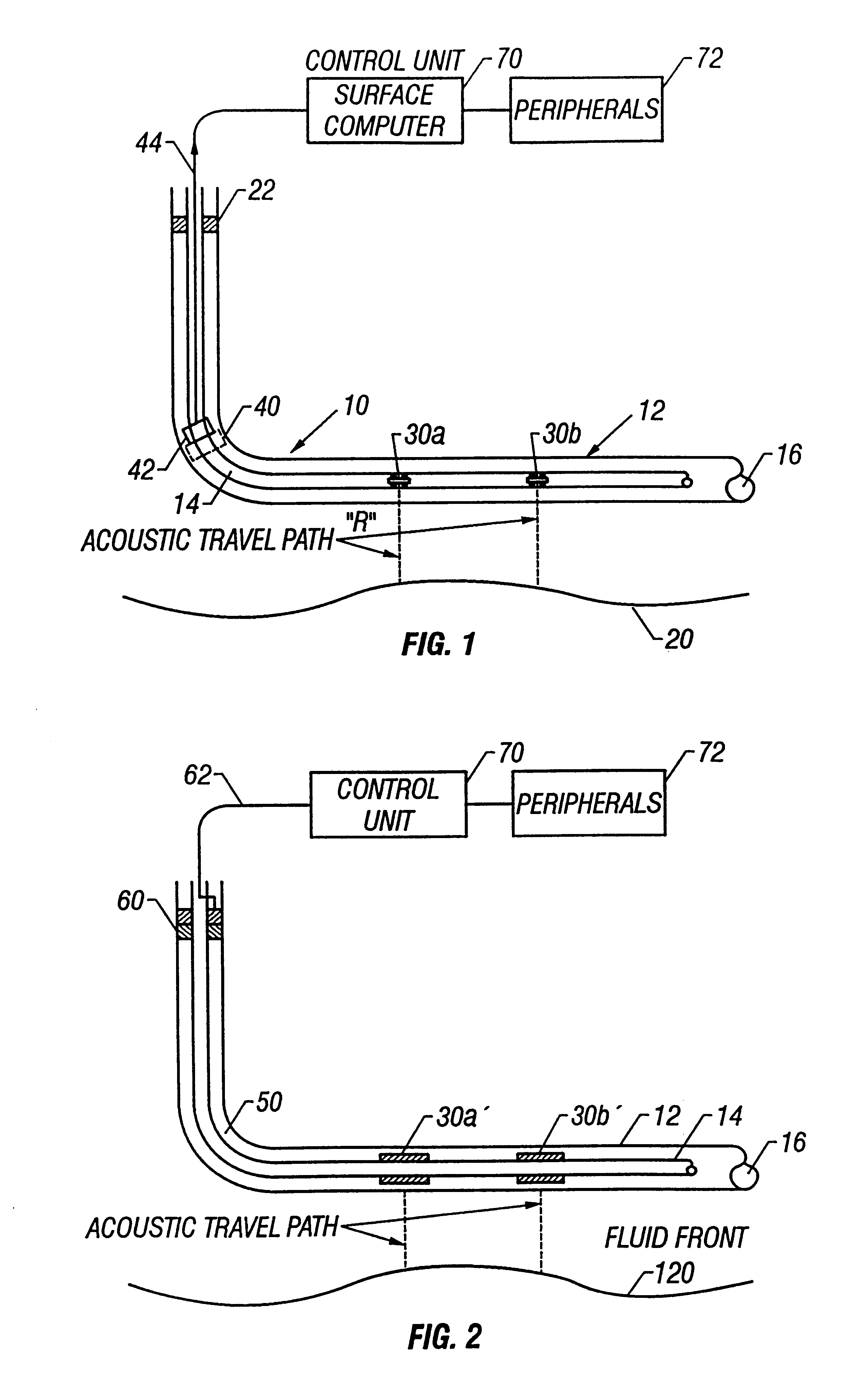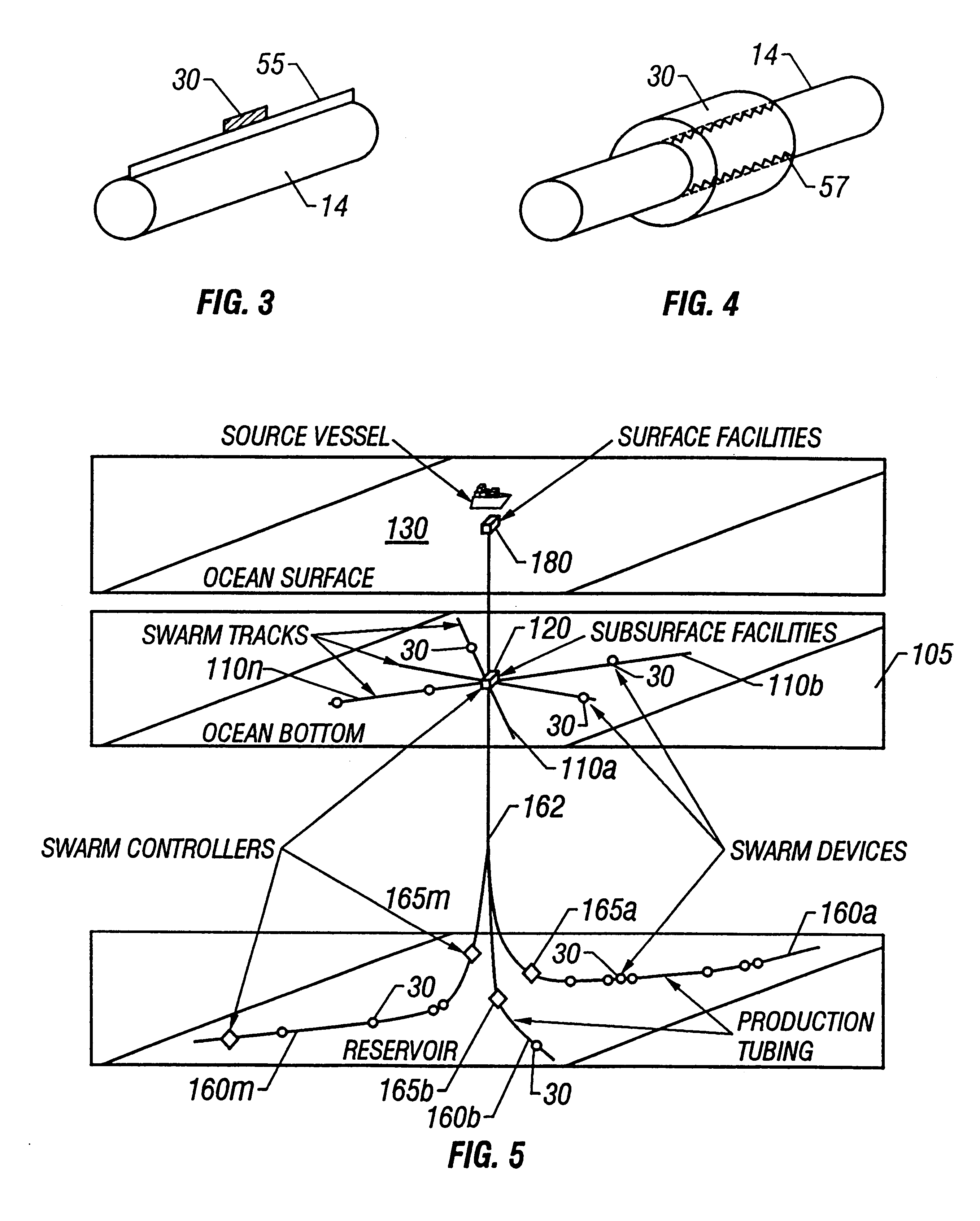Use of autonomous moveable obstructions as seismic sources
a technology of moving obstructions and seismic sources, applied in the field of hydrocarbon production, can solve the problems of long data processing cycles of subsurface vsp and 3d vsp, inability to use near real-time, and inability to acquire repeat 3d seismic data,
- Summary
- Abstract
- Description
- Claims
- Application Information
AI Technical Summary
Problems solved by technology
Method used
Image
Examples
Embodiment Construction
The present invention functions in at least two distinct but related modes for using autonomous carriers to convert acoustic tube waves into body waves or provide sesimic sources deployed by autonomous carriers. The first mode provides a near, real-time method to acquire seismic data in and / or above a reservoir at very high spatial resolution such that advancing fluid fronts and hydrocarbons can be detected. The second mode provides an alternative method of acquiring repeat 3-D seismic surveys over small areas. Both methods enable investigation of large spatial extents at arbitrarily fine spatial intervals.
The system and methods of the present invention may be utilized for subsurface (i.e. in-hole), earth surface applications and ocean bottom applications. FIGS. 1 and 2 illustrate examples of in-hole applications. FIG. 1 is a schematic diagram of a production well 10 that is producing hydrocarbons from a reservoir R.sub.1. The well 10 is shown to include a horizontal section 12 form...
PUM
 Login to View More
Login to View More Abstract
Description
Claims
Application Information
 Login to View More
Login to View More - R&D
- Intellectual Property
- Life Sciences
- Materials
- Tech Scout
- Unparalleled Data Quality
- Higher Quality Content
- 60% Fewer Hallucinations
Browse by: Latest US Patents, China's latest patents, Technical Efficacy Thesaurus, Application Domain, Technology Topic, Popular Technical Reports.
© 2025 PatSnap. All rights reserved.Legal|Privacy policy|Modern Slavery Act Transparency Statement|Sitemap|About US| Contact US: help@patsnap.com



